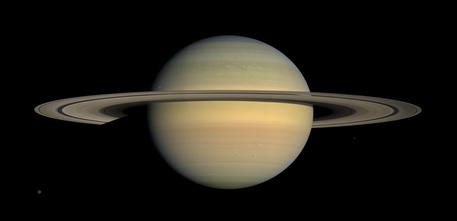(ANSA) - Rome, January 17 - Saturn's rings are younger than previously thought, being born 100 million years ago when the last dinosaurs were dying out on Earth, according to a study led by Rome's Sapienza University and funded by the Italian Space Agency, published in the Science journal. The study is based on data captured by the Cassini probe in its dive into the planet's atmosphere that ended the NASA, European Space Agency (ESA) and ASI mission.
Saturn's rings are, therefore, much younger than their planet, which was formed around 4.5 billion years ago.
"With these data we have found the last piece of the puzzle," said Luciano Iess from Sapienza's mechanical and aerospace engineering department, who coordinated the study with Daniele Durante and Paolo Racioppa. The measurement of the mass of the rings is the last piece of the puzzle which has just been found.
"We have fille din this missing square," Iess added, "with a precise measurement, whereas in the past there were only clues".
The Cassini data, furthermore, supplied new information on Saturn's winds, which blow at 200 metres a second and penetrate up to 9,000 kilometres into the gaseous planet, while those on Jupiter stop at 2,000 kilometres.
"The mass of the rings was the last part of the puzzle. A small mass, which we measured through Cassini's tele-measurement system, indicates a young age," said Iess.
"There were already clues that the rings were not formed together with Saturn, but now we have a very convincing proof, which it was possible to obtain only in the final phase of the mission".
There has also been news on the nucleus of Saturn, which takes up 15% of the planet, with a mass which is 15-18 times higher than that of Earth and formed of heavy elements: an important clue on the formation of Saturn and its moons.
The origin of the rings is still only a hypothesis. one of the most likely indicates the impact of a comet, which may have disintegrated one of saturn's moons.
